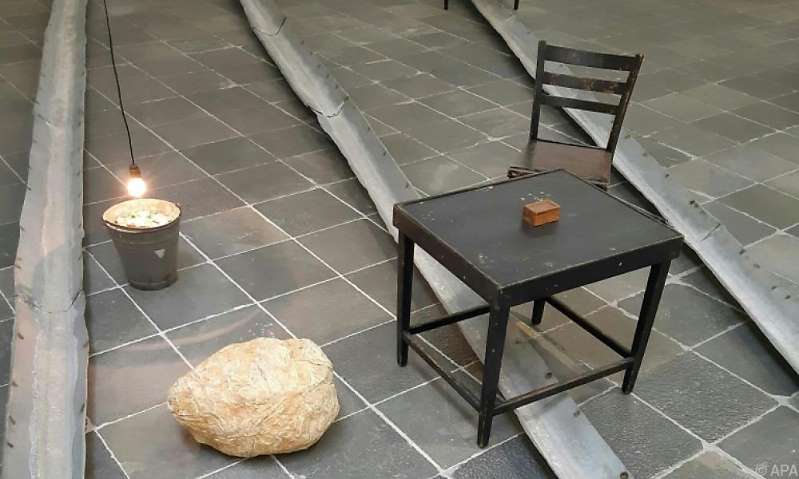Pop star, environmental activist and rarely without a felt hat: Joseph Beuys (1921-1986) is undoubtedly one of the most influential and highly endowed actors on the art scene in the second half of the 20th century. The Belvedere 21 is dedicating a retrospective to the exceptional German artist, who would have turned 100 in May, from Thursday. In addition to large-scale installations such as the “Honey Machine”, the main focus is on those traces that Beuys left behind in Vienna.

Image: APA
The Beuys birthday show brings together 64 works – including sketches, drawings and a suit made entirely of felt – as well as 123 exhibits such as photographs, posters and other documentation material. “It was a bold decision to have an exhibition on Beuys in the year of the 100th birthday,” said Belvedere director Stella Rollig on Wednesday during a press conference. After all, according to the current status, 32 “museum projects” about this powerful artist are taking place all over the world – “from Osaka in Japan to Izmir in Turkey”. “You notice the radiance of Beuys and his work to this day,” said Rollig, who proudly emphasized that Belvedere 21 with “Joseph Beuys. Think. Act. Communicate.” was there very early and could, so to speak, give the starting shot for this year's anniversary year.
So how do you approach this giant of recent art history, who made a name for himself with the excessive use of fat and felt and his idea of social sculpture – art as a collective act of political and social design – without getting lost in the international festivities? By telling a thread in Beuys' work with the various references to Vienna, which, according to curator Harald Krejci, has so far hardly received any closer attention.
In 1966 – before his big breakthrough at the time – Beuys came to the federal capital for the first time to exhibit at the invitation of Monsignor Otto Maurer in the gallery together with St. Stephan. Vienna was interested in the artist because of its geopolitical location, but also because of the local art scene – especially the Viennese actionists – explained Rollig. A year later, Beuys carried out his “EURASIENSTAB 82 min fluxorum organum” campaign in the same gallery: Beuys drove a 50 kilo copper stick along four felt corners, brought him to a “fat corner” made from margarine blocks and wanted to do so in times of Cold War symbolize a merging of East and West. Photographs and a film recording near the exhibition entrance are reminiscent of the performance.
“Base room wet laundry” was also specially designed for Vienna – a critical commentary on the plan at the time to accommodate the museum of modern art in the magnificent baroque Palais Liechtenstein. Three gutters, sparse furniture, a bucket of grease and a lightbulb are part of this space-consuming installation from 1979. In the same year, Beuys also had a professorship at the Vienna University of Applied Arts within reach, which he turned down.
The second space-consuming arrangement is dedicated to the “honey pump in the workplace” (1977). Beuys had it erected at the documenta in Kassel. Using a motor-driven pump, honey flowed across several floors through a circuit of hoses, while the artist himself held discussions on various topics for 100 days in a seminar room next door.
As is so often the case with actionist art, Belvedere 21 is also faced with the question of how past performances can be museumized with the help of relics. In the case of the “honey pump”, the decision was made to place the individual original components of the project next to one another, similar to a warehouse setting. A film shows the machine in action.
In 1983, three years before his death, Beuys, who had meanwhile advanced to become an artist star but was also rejected as a blender and charlatan, came to Vienna for the last time to exchange ideas with the then Federal Chancellor Bruno Kreisky. He also planted a tree in front of the Angewandte – who has been involved with the Greens since the mid-1970s – and thought aloud about foresting the current Museum Quarter area.
A year earlier, Beuys had started his “7000 oaks” campaign. Unloaded basalt steles in front of the Fridericianum museum building in Kassel were set up again for a fee, together with an oak tree. The project under the motto “city deforestation instead of city administration” could only be completed a year after the death of its initiator. As a homage to this ecological intervention, a pedunculate oak was planted in the sculpture garden of Belvedere 21 today.
(SERVICE – “Joseph Beuys. Think. Act. Mediate.” In Belvedere 21, 3rd, Arsenalstrasse 1; from Thursday to June 13; Tuesday to Sunday 11 a.m. to 6 p.m., 9 euros, reduced 7 euros; accompanying program depending on current events Corona regulations planned from around mid-April; a 200-page catalog has been published for the exhibition;)

